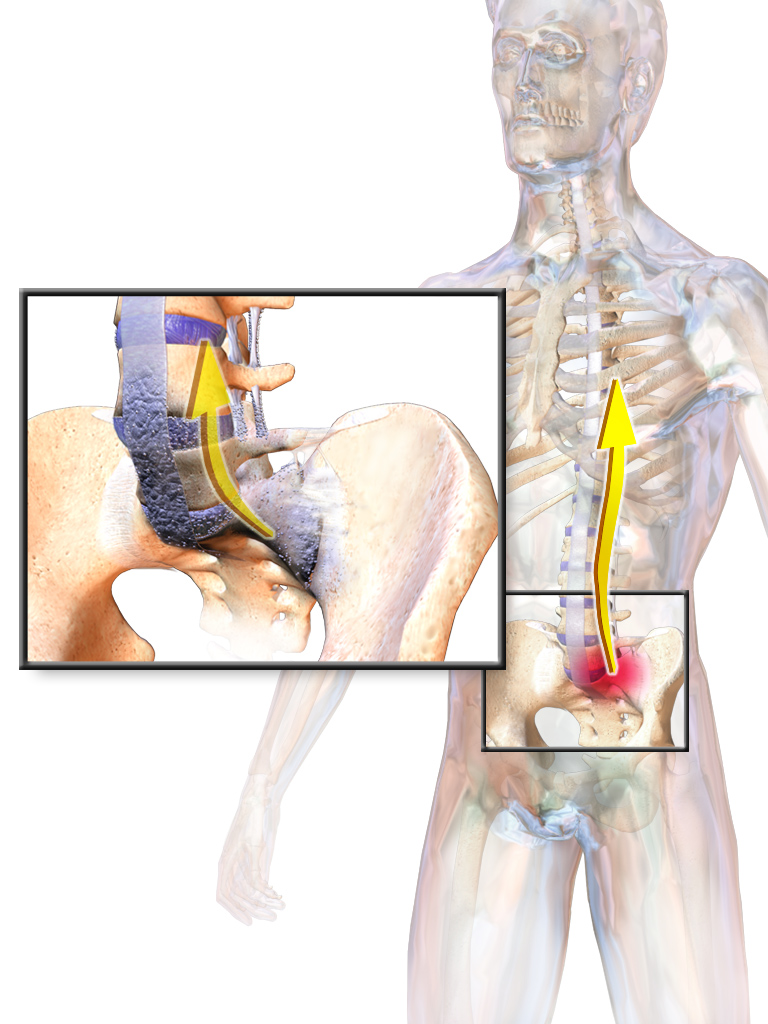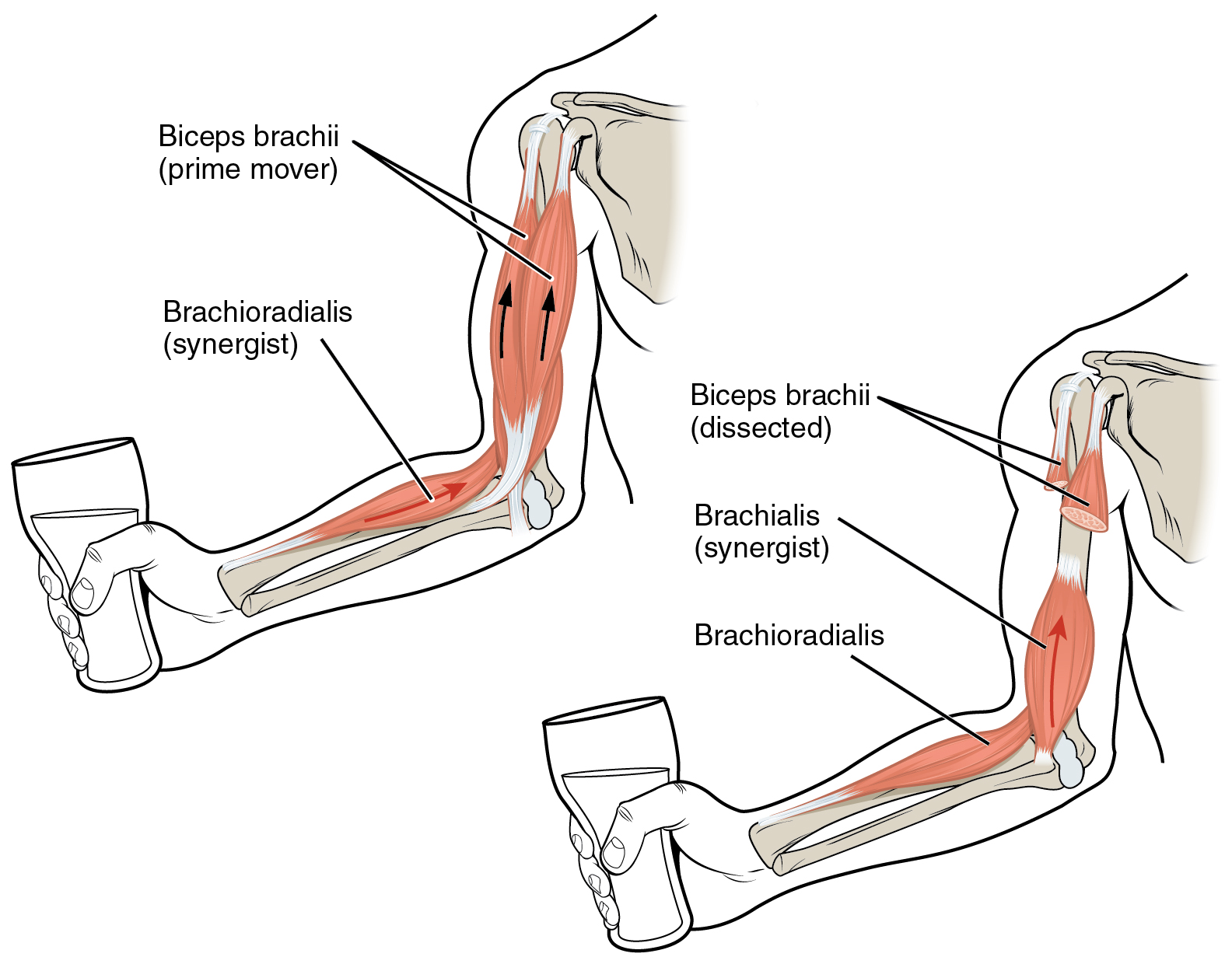|
Entheses
The enthesis (plural entheses) is the connective tissue which attaches tendons or ligaments to a bone. There are two types of entheses: ''Fibrous tissue, fibrous entheses'' and ''fibrocartilaginous entheses''. In a fibrous enthesis, the collagenous tendon or ligament directly attaches to the bone. In a fibrocartilaginous enthesis, the interface presents a gradient that crosses four transition zones: # Tendinous area displaying longitudinally oriented fibroblasts and a parallel arrangement of collagen fibres # Fibrocartilaginous region of variable thickness where the structure of the cells changes to chondrocytes # Abrupt transition from cartilaginous to calcified fibrocartilage—often called 'tidemark' or 'blue line' # Bone Clinical significance A disease of the entheses is known as an ''enthesopathy'' or ''enthesitis''. Enthetic degeneration is characteristic of spondyloarthropathy and other pathologies. The enthesis is the primary site of disease in ankylosing spondylit ... [...More Info...] [...Related Items...] OR: [Wikipedia] [Google] [Baidu] |
Enthesopathy
An enthesopathy refers to a disorder involving the attachment of a tendon or ligament to a bone. This site of attachment is known as the entheses, enthesis (pl. entheses). If the condition is known to be Inflammation, inflammatory, it can more precisely be called an enthesitis. Forms Enthesopathy can occur at the shoulder, elbow, wrist, Carpal bones, carpus, hip, knee, ankle, Tarsus (skeleton), tarsus, or heel bone, among other regions. Enthesopathies may take the form of spondyloarthropathy, spondyloarthropathies (joint diseases of the spine) such as ankylosing spondylitis, or psoriatic arthritis, plantar fasciitis, and Achilles tendinitis. Further examples include: * Adhesive capsulitis of shoulder * Rotator cuff syndrome of shoulder and allied disorders * Periarthritis of shoulder * Scapulohumeral fibrositis * Synovitis of hand or wrist * Periarthritis of wrist * Gluteal tendinitis * Iliac crest spur * Psoas tendinitis * Trochanteric tendinitis Causes Generalized involvemen ... [...More Info...] [...Related Items...] OR: [Wikipedia] [Google] [Baidu] |
Enthesitis
Enthesitis is inflammation of the entheses (singular: enthesis), the sites where tendons, ligaments and joint capsules attach to bones. It is a type of enthesopathy, meaning any pathologic condition of the entheses, with or without inflammation. There are some cases of isolated, primary enthesitis which are very poorly studied and understood. It is known to be associated with other autoimmune diseases, like spondyloarthropathies and psoriasis (thought to often precede psoriatic arthritis). A common autoimmune enthesitis is at the heel, where the Achilles tendon attaches to the calcaneus. It is associated with HLA B27 arthropathies, such as ankylosing spondylitis, psoriatic arthritis, and reactive arthritis. Signs and symptoms Early clinical manifestations are an aching sensation akin to "working out too much", and it gets better with activity. It is worse in the morning (after sleeping and not moving). The muscle insertion hurts very focally as it joins into the bone, but ... [...More Info...] [...Related Items...] OR: [Wikipedia] [Google] [Baidu] |
Bioarchaeology
Bioarchaeology (osteoarchaeology, osteology or palaeo-osteology) in Europe describes the study of biological remains from archaeological sites. In the United States it is the scientific study of human remains from archaeological sites. The term was minted by British archaeologist Grahame Clark who, in 1972, defined it as the study of animal and human bones from archaeological sites. Jane Buikstra came up with the current US definition in 1977. Human remains can inform about health, lifestyle, diet, mortality and physique of the past. Although Clark used it to describe just human remains and animal remains, increasingly archaeologists include botanical remains. Bioarchaeology was largely born from the practices of New Archaeology, which developed in the United States in the 1970s as a reaction to a mainly cultural-historical approach to understanding the past. Proponents of New Archaeology advocate testing hypotheses about the interaction between culture and biology, or a bio ... [...More Info...] [...Related Items...] OR: [Wikipedia] [Google] [Baidu] |
Ankylosing Spondylitis
Ankylosing spondylitis (AS) is a type of arthritis from the disease spectrum of axial spondyloarthritis. It is characterized by long-term inflammation of the joints of the spine, typically where the spine joins the pelvis. With AS, eye and bowel problems—as well as back pain—may occur. Joint mobility in the affected areas sometimes worsens over time. Ankylosing spondylitis is believed to involve a combination of genetic and environmental factors. More than 90% of people affected in the UK have a specific human leukocyte antigen known as the HLA-B27 antigen. The underlying mechanism is believed to be autoimmune or autoinflammatory. Diagnosis is based on symptoms with support from medical imaging and blood tests. AS is a type of seronegative spondyloarthropathy, meaning that tests show no presence of rheumatoid factor (RF) antibodies. There is no cure for AS. Treatments may include medication, physical therapy, and surgery. Medication therapy focuses on relieving the pai ... [...More Info...] [...Related Items...] OR: [Wikipedia] [Google] [Baidu] |
Spondyloarthropathy
Spondyloarthritis (SpA), also known as spondyloarthropathy, is a collection of syndromes connected by genetic predisposition and clinical symptoms. The best-known subtypes are enteropathic arthritis (EA), psoriatic arthritis (PsA), ankylosing spondylitis (AS), and reactive arthritis (ReA). Symptoms of spondyloarthritis include back pain, arthritis, and enthesitis, inflammation at bone-adhering ligaments, tendons, or joint capsules. Spondyloarthritis is caused by a combination of genetic and environmental factors. It is associated with intestinal inflammation, with a connection between Crohn's disease and ankylosing spondylitis. Reactive arthritis is primarily caused by gastrointestinal, genitourinary, respiratory infections, and genetic factors. Spondyloarthritis is diagnosed based on symptoms and imaging. Early diagnosis criteria use genetic testing and more advanced forms of medical imaging. Spondyloarthritis is categorized into two groups based on the Assessment of Spondylo ... [...More Info...] [...Related Items...] OR: [Wikipedia] [Google] [Baidu] |
Sharpey's Fibres
Sharpey's fibres (bone fibres, or perforating fibres) are a matrix of connective tissue consisting of bundles of strong predominantly type I collagen fibres connecting periosteum to bone. They are part of the outer fibrous layer of periosteum, entering into the outer circumferential and interstitial lamellae of bone tissue. Sharpey's fibres also attach muscle to the periosteum of bone by merging with the fibrous periosteum and underlying bone as well. A good example is the attachment of the rotator cuff muscles to the blade of the scapula. In the teeth, Sharpey's fibres are the terminal ends of principal fibres (of the periodontal ligament) that insert into the cementum and into the periosteum of the alveolar bone. A study on rats suggests that the three-dimensional structure of Sharpey's fibres intensifies the continuity between the periodontal ligament fibre and the alveolar bone (tooth socket), and acts as a buffer medium against stress. Sharpey's fibres in the pri ... [...More Info...] [...Related Items...] OR: [Wikipedia] [Google] [Baidu] |
Semantic Field
In linguistics, a semantic field is a related set of words grouped semantically (by meaning) that refers to a specific subject.Howard Jackson, Etienne Zé Amvela, ''Words, Meaning, and Vocabulary'', Continuum, 2000, p14. The term is also used in anthropology,Ingold, Tim (1996). ''Key debates in anthropology''. Routledge. , . Source(accessed: Sunday May 2, 2010), p.127 computational semiotics, and technical exegesis. Definition and usage Brinton (2000: p. 112) defines "semantic field" or "semantic domain" and relates the linguistic concept to hyponymy: Related to the concept of hyponymy, but more loosely defined, is the notion of a semantic field or domain. A semantic field denotes a segment of reality symbolized by a set of related words. The words in a semantic field share a common semantic property. A general and intuitive description is that words in a semantic field are not necessarily synonymous, but are all used to talk about the same general phenomenon.Adrian ... [...More Info...] [...Related Items...] OR: [Wikipedia] [Google] [Baidu] |
Anatomical Terms Of Muscle
Anatomical terminology is used to uniquely describe aspects of skeletal muscle, cardiac muscle, and smooth muscle such as their actions, structure, size, and location. Types There are three types of muscle tissue in the body: skeletal, smooth, and cardiac. Skeletal muscle Skeletal muscle, or "voluntary muscle", is a striated muscle tissue that primarily joins to bone with tendons. Skeletal muscle enables movement of bones, and maintains posture. The widest part of a muscle that pulls on the tendons is known as the belly. Muscle slip A muscle slip is a slip of muscle that can either be an anatomical variant, or a branching of a muscle as in rib connections of the serratus anterior muscle. Smooth muscle Smooth muscle is involuntary and found in parts of the body where it conveys action without conscious intent. The majority of this type of muscle tissue is found in the digestive and urinary systems where it acts by propelling forward food, chyme, and feces in the former and u ... [...More Info...] [...Related Items...] OR: [Wikipedia] [Google] [Baidu] |
Ancient Greek
Ancient Greek (, ; ) includes the forms of the Greek language used in ancient Greece and the classical antiquity, ancient world from around 1500 BC to 300 BC. It is often roughly divided into the following periods: Mycenaean Greek (), Greek Dark Ages, Dark Ages (), the Archaic Greece, Archaic or Homeric Greek, Homeric period (), and the Classical Greece, Classical period (). Ancient Greek was the language of Homer and of fifth-century Athens, fifth-century Athenian historians, playwrights, and Ancient Greek philosophy, philosophers. It has contributed many words to English vocabulary and has been a standard subject of study in educational institutions of the Western world since the Renaissance. This article primarily contains information about the Homeric Greek, Epic and Classical periods of the language, which are the best-attested periods and considered most typical of Ancient Greek. From the Hellenistic period (), Ancient Greek was followed by Koine Greek, which is regar ... [...More Info...] [...Related Items...] OR: [Wikipedia] [Google] [Baidu] |
Calcific Tendinitis
Calcific tendinitis is a common condition where deposits of calcium phosphate form in a tendon, sometimes causing pain at the affected site. Deposits can occur in several places in the body, but are by far most common in the rotator cuff of the shoulder. Around 80% of those with deposits experience symptoms, typically chronic pain during certain shoulder movements, or sharp acute pain that worsens at night. Calcific tendinitis is typically diagnosed by physical exam and X-ray imaging. The disease often resolves completely on its own, but is typically treated with non-steroidal anti-inflammatory drugs to relieve pain, rest and physical therapy to promote healing, and in some cases various procedures to breakdown and/or remove the calcium deposits. Adults aged 30–50 are most commonly affected by calcific tendinitis. It is twice as common in women as men, and is not associated with exercise. Calcifications in the rotator cuff were first described by Ernest Codman in 1934. The name, ... [...More Info...] [...Related Items...] OR: [Wikipedia] [Google] [Baidu] |
Connective Tissue
Connective tissue is one of the four primary types of animal tissue, a group of cells that are similar in structure, along with epithelial tissue, muscle tissue, and nervous tissue. It develops mostly from the mesenchyme, derived from the mesoderm, the middle embryonic germ layer. Connective tissue is found in between other tissues everywhere in the body, including the nervous system. The three meninges, membranes that envelop the brain and spinal cord, are composed of connective tissue. Most types of connective tissue consists of three main components: elastic and collagen fibers, ground substance, and cells. Blood and lymph are classed as specialized fluid connective tissues that do not contain fiber. All are immersed in the body water. The cells of connective tissue include fibroblasts, adipocytes, macrophages, mast cells and leukocytes. The term "connective tissue" (in German, ) was introduced in 1830 by Johannes Peter Müller. The tissue was already recognized as ... [...More Info...] [...Related Items...] OR: [Wikipedia] [Google] [Baidu] |






